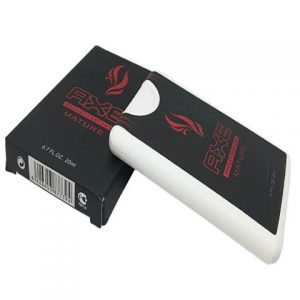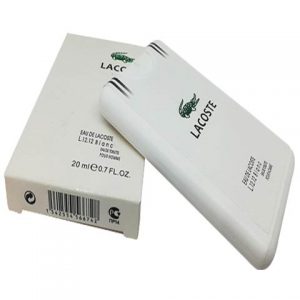Content
He has an engineering degree from the University of California at Berkeley and an MBA from Cornell University. After the project progresses, the leader can recommend that it advance from Incubator to “Lab” status. Blankenship, as well as others including project leaders from other projects, will review the project using OWASP criteria to ensure the project has advanced and has earned the new designation.
Until there is a breach, or the regulator unleashes wrath on the management, a big client demands the actual proof of product security, or an M&A requires a demonstration of due diligence, etc. A query or command that inserts untrusted data into the interpreter, causing it to generate unintended commands or expose data. For this, best practices would be to segregate commands from data, use parameterized SQL queries, and eliminate the interpreter by using a safe application program interface, if possible. Implement runtime application protection capabilities that continuously detect and block common application attacks such as SQL injections and command injections. The advent of microservices and serverless computing means that cloud-based applications may consist of thousands of containerized services. It is nearly impossible for teams to gain full-scope, comprehensive visibility into environments that are so complex.
Encode and Escape Data
Make sure you track the use of open source libraries and maintain an inventory of versions, their licenses and vulnerabilities such as OWASP’s top 10 vulnerabilities using tools like OWASP’s Dependency Check or Snyk. Introducing two new secret scanning push protection features that will enable individual developers to protect all their pushes and organizations to gain insights and trends across their repositories. If there’s one habit that can make software more secure, it’s probably input validation.
To avoid these problems, set up automated DevSecOps release validation and security gates so that no insecure code progresses to production. In this course, you will learn about the OWASP Top 10 Proactive Controls document and the many guidelines it provides to help developers write better and more secure code. In particular, I provide an overview of the Proactive Controls and then I cover the first five security controls. The list goes on from injection attacks protection to authentication, secure cryptographic APIs, storing sensitive data, and so on. If you devote your free time to developing and maintaining OSS projects, you might not have the time, resources, or security knowledge to implement security features in a robust, complete way. In this blog post, I’ll discuss the importance of establishing the different components and modules you’ll need in your project and how to choose frameworks and libraries with secure defaults.
Search code, repositories, users, issues, pull requests…
Open source now makes up about 70% of modern applications, and there are thousands of known vulnerabilities in open-source code. Numerous organizations offer databases of these weaknesses, such as the Snyk Intel Vulnerability Database. The OWASP also has an extensive list of free tools for open source vulnerability detection. Previously known as broken authentication, this entry has moved down from number 2 and now includes CWEs related to identification failures. Specifically, functions related to authentication and session management, when implemented incorrectly, allow attackers to compromise passwords, keywords, and sessions, which can lead to stolen user identity and more. One of the main goals of this document is to provide concrete practical guidance that helps developers build secure software.
This broad category refers to fundamental design flaws in the application caused by a failure to implement necessary security controls during the design stage. Extend observability to pre-production environments to catch vulnerabilities early on. In this session, Jim walked us through the list of OWASP Top 10 proactive controls and how to incorporate them into our web applications. Details of errors and exceptions are useful to us for debugging, analysis, and forensic investigations.
Security logging and monitoring failures
Additionally, prioritization must also take exploitability and business impact into account. Often, the CVSS score on its own does not help prioritize as it is designed to score the worst-case scenario and assumes the vulnerability is exploitable. Many times, a “severe” vulnerability is part of a code library that is never executed or is difficult to exploit as it is not adjacent to the internet.
Vulnerable and Outdated Components refer to security risks that arise from using outdated or insecure software components, such as libraries, frameworks, or plugins. These components may contain known vulnerabilities that can be exploited by attackers. There is plenty of publicly available information about how software development teams can make their products more secure. Developers get stuck in their routine jobs following the usual development cycle with no incentive to learn about security.
The OWASP Top Ten Proactive Controls Project with Jim Bird
This vulnerability allows attackers to bypass authorization mechanisms and gain unauthorized privileges or access sensitive data. Broken Access Control is currently the most prevalent issue, accounting for a significant number of security incidents. During the training, we teach all required information on where to search for correct data and guidance on application security and how to apply it in practice. After the course, the development team knows what appsec is, understands what appsec practices they need, and has a clear implementation roadmap. The list of practices in your initial software security program might vary, but there are several you simply cannot avoid. These are Threat Modeling, Secure Architecture Design, Security Development, and Security Testing.
They are generally not useful to a user unless that user is attacking your application. In this blog post, you’ll learn more about handling errors in a way that is useful to you and not to attackers. This includes making sure no sensitive data, such as passwords, owasp proactive controls access tokens, or any Personally Identifiable Information (PII) is leaked into error messages or logs. It’s important to carefully design how your users are going to prove their identity and how you’re going to handle user passwords and tokens.





